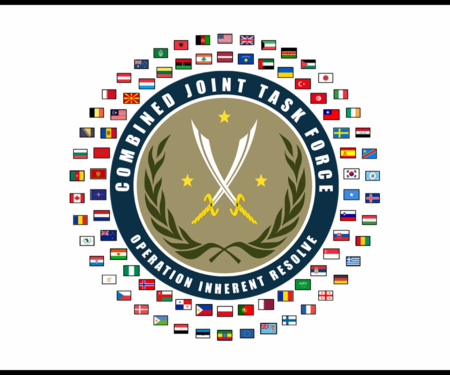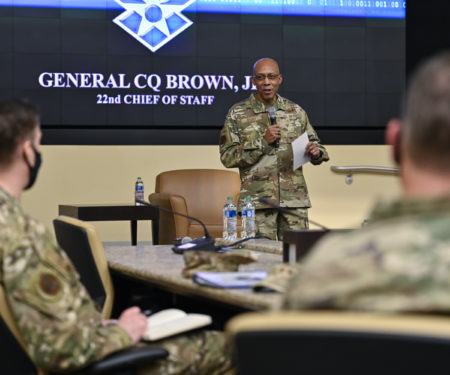Radar Sweep
GAO to Investigate SPACECOM HQ Selection Process
Rep. Doug Lamborn (R-Colo.) requested the review in a Feb. 1 letter to the Government Accountability Office, questioning the evaluation criteria for the decision and highlighting concerns that "there was untoward political influence exerted by President Trump on [Air Force] leaders to modify the process and ensure Huntsville, Alabama was chosen."
Rogers Feeling Optimistic about Space Force Procurement Efforts
Rep. Mike Rogers (R-Ala.) said the Space Force is making progress in the organization of its acquisition office and expects to see new proposals to accelerate acquisition programs.
Austin Hints India’s Purchase of Russian Missile System Could Trigger Sanctions
Defense Secretary Lloyd J. Austin III hinted during a visit to New Delhi on March 20 that India’s planned purchase of an advanced Russian missile system could trigger U.S. sanctions, but left room for New Delhi to back away from the deal.
Race in the Ranks: An F-22 Pilot on the Sting of Racial Bias in the Air Force
Air Force Maj. Daniel Walker shares his story with “60 Minutes” contributor David Martin.
US Air Force’s T-38 Trainer Could Soon Dogfight with Augmented Reality Adversaries
In the future, when U.S. Air Force fighter pilots face off in aerial combat training missions, they could be dogfighting the video game version of Chinese and Russian warplanes at a fraction of the cost of using real jets like the F-22 Raptor. At least that’s the pitch the California-based company known as Red 6 is making to the service.
In Syria, US Commanders Hold the Line—and Wait for Biden
Troops maintain the status quo amid a counterterrorism success-turned-frozen war.
$88 Billion and 20 Years Later, the Afghan Security Forces Are Still No Match for the Taliban
Over the past two decades, the United States has invested more than $88 billion to build, train, and equip Afghan troops and police—and yet the Taliban is clearly a superior fighting force.
Navy and Marine Corps Make Drones a Top Priority
The services released an Unmanned Campaign Plan last week that will advance manned-unmanned teaming in naval and joint missions and build a digital infrastructure that integrates drones at speed and scale.
Taiwan Loses Two Fighter Jets in Apparent Collision, 3rd Such Crash in 6 Months
Two Taiwanese fighter jets crashed on March 22 in the third such incident in the past half year, at a time when the Beijing-claimed island’s armed forces are under increasing pressure to intercept Chinese aircraft on an almost daily basis.
Jake Gyllenhaal Set to Play Medal of Honor Recipient John Chapman in ‘Combat Control’
Jake Gyllenhaal is set to team up with “Extraction” director Sam Hargrave to make “Combat Control,” a movie about Air Force Sgt. John Chapman, killed in action in Afghanistan during Operation Anaconda in March 2002.






